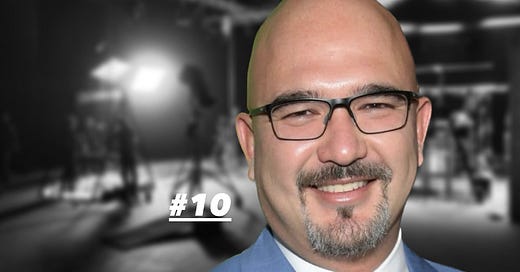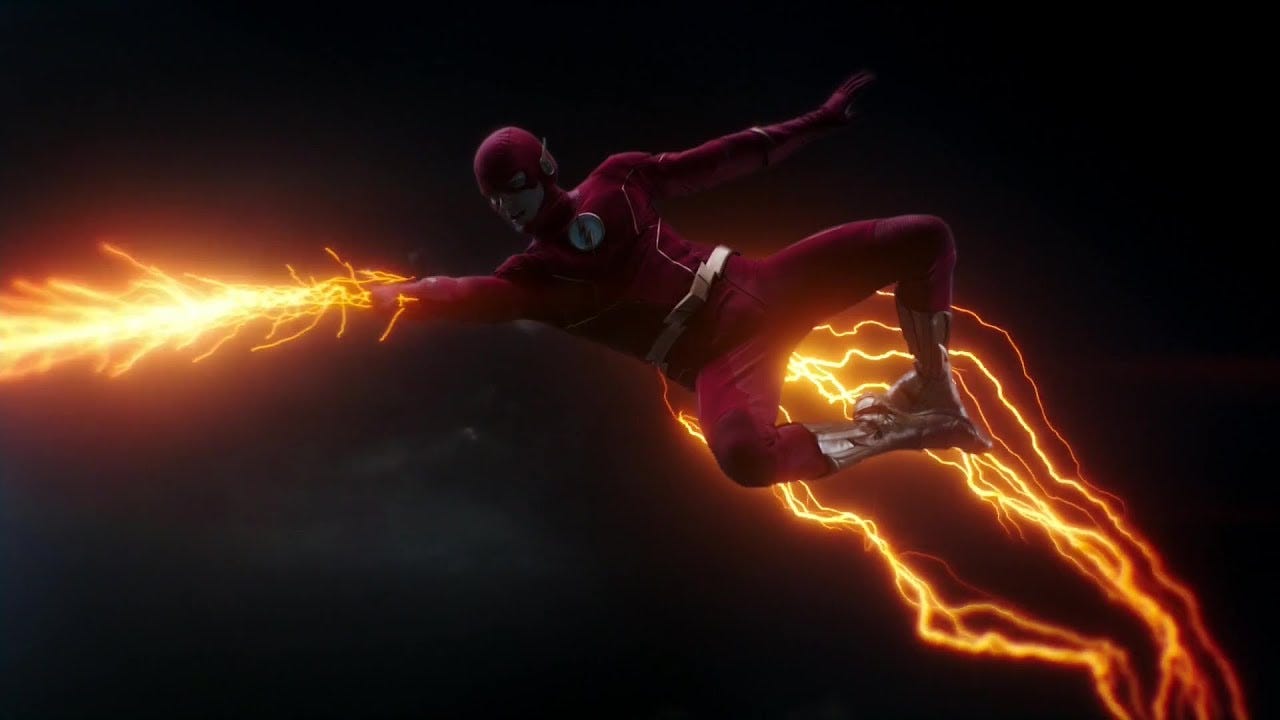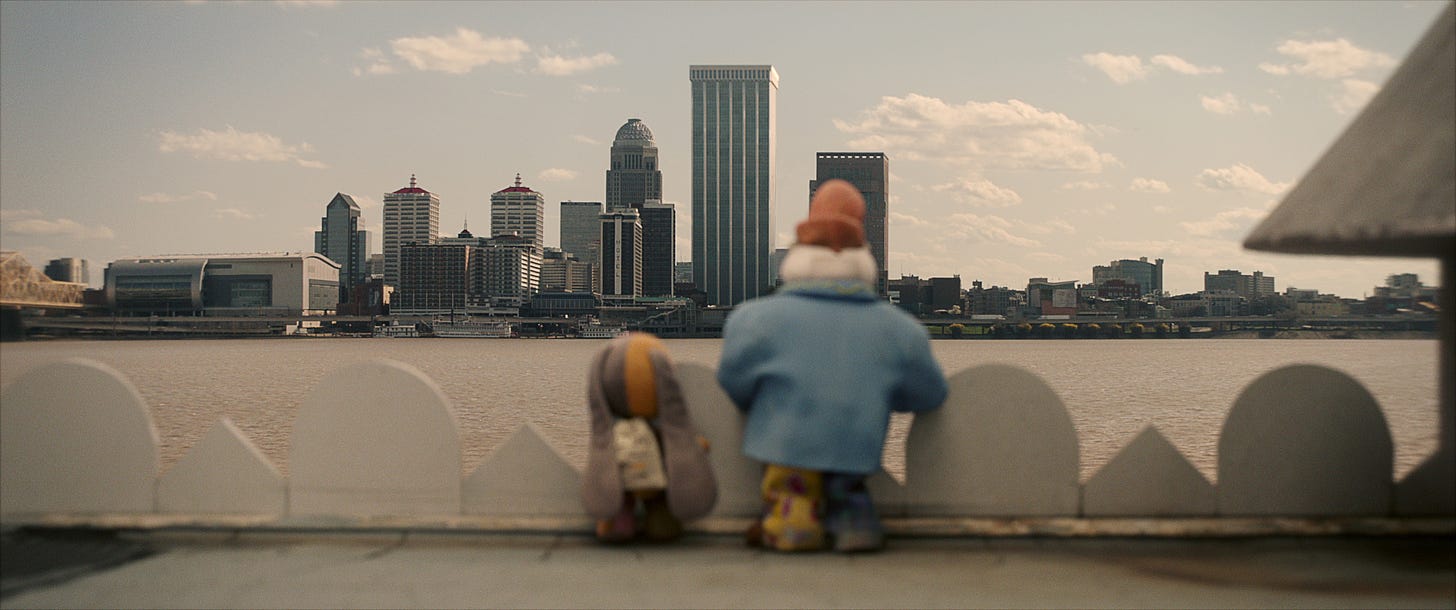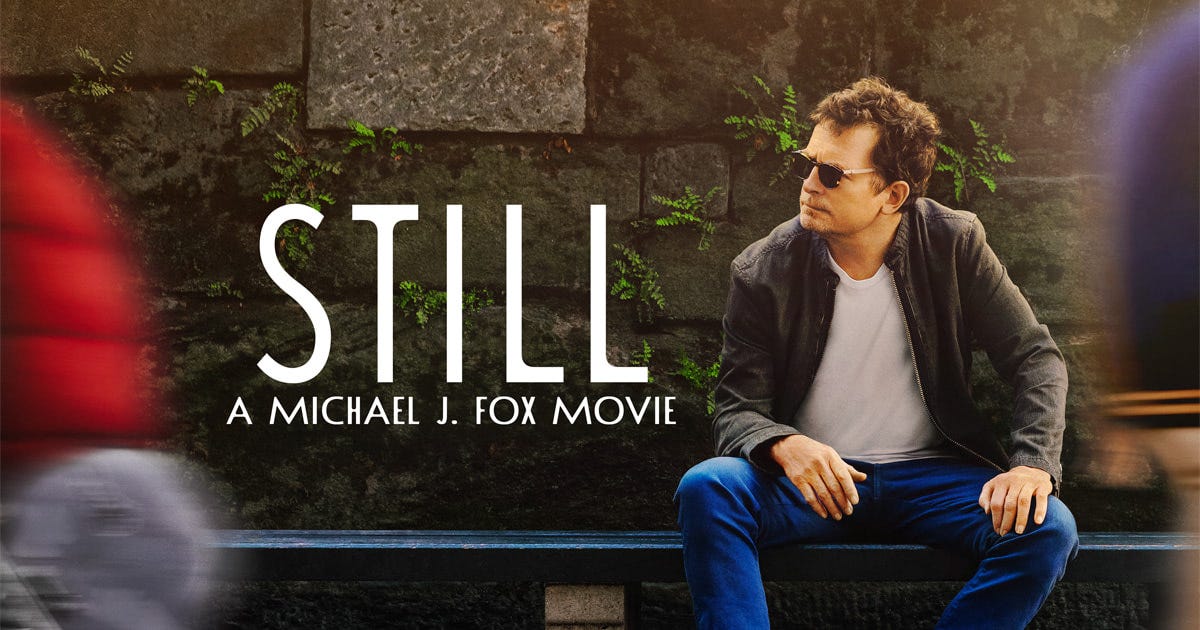Asian A.V. Club newsletter #10: C. Kim Miles
Cinematographer C. Kim Miles, tells us his fascinating journey from Malaysia as a commercials director to working on the Emmy nominated doc Still: A Michael J. Fox Movie.
C. Kim Miles is the first to admit that his 20+ year career behind the camera has been a long game of hard work and serendipitous opportunities. Working as a director of photography on movies of the week, superhero tv series, docs and feature films, the scope of his 90 plus (and counting) projects, showcase a work ethic that continues to evolve with every new job.
We got to talk to Miles a few weeks back about his unconventional career path and if it sounds like we are geeking out… we are geeking out!
Asian A.V. Club: I read somewhere that you started doing production work at 15! How did that come about?
C. Kim Miles: Well, I grew up in Malaysia. My mom’s Chinese and my dad is a Caucasian mix from the Midwest. I went to school there and one day, my best friend Justin Woon, whose parents owned a production company, was like, ‘Hey, want to be a grip at my mom and dad’s place?’ And I was like, what's that? (laughs) That's how it started for me. I was a grip at 15 and kind of stumbled through learning the ropes that way. Now I enjoyed being a grip, but I saw that the camera people got all the glory, so I just kind of pestered my way into the camera department. And on my days off, I learned to play with all the gear and stuff, and that's how that sort of happened.
I then went to the University of Victoria, in BC (British Columbia, Canada) to do still photography. One thing led to another, and I got married and ended up staying here [in Vancouver], but I would still go back in the summertime between classes and pull focus or be the camera assistant. Then in 1996, my wife Joanna and I decided we needed a change of scenery. By now Justin had his own production company and he said, ‘Come work for me, you can be a camera assistant in house’. So, we packed up, put everything in storage and went to Malaysia thinking that we were going to be there permanently.
Asian A.V. Club: But that was all in advertising?
C.Kim Miles: Yeah, all of that was in the commercial business. There wasn't a lot of narrative film at the time over there. It’s a small market and even more so that speak Malay. But it was fun shooting European inspired commercials and meeting directors that had come from the UK, Australia and the US.
In 1997, a friend of ours, named Jerry McKenna, who worked in Malaysia as a creative director for advertising agencies like McCann Erickson, he thought to himself, ‘I can direct this stuff better than these directors.’ So, he called me one day and said, ‘What are you doing in two weeks? You gotta come shoot something.’ I was like, ‘What, I don’t know about shooting. I’m just a camera assistant.’ He’s like ‘Well, it’s too late, I’ve already got you approved by the agency.’ (laughs) So, that was my intro to shooting stuff. I had no idea what I was doing the first day and I relied a lot on the crew to help out and show me how to do things. I've kind of stumbled into everything as I've gone along, but I've been really lucky my whole life.
Asian A.V. Club: That is an awesome story! But how did that transition into making movies?
C. Kim Miles: Well, in 98, there was a financial crisis that started in Thailand that took down all the regional stock markets. And the first thing people stopped doing was advertising. So, the industry kind of collapsed. I had enough commercials on my reel now that I thought, maybe we should move back to Canada and see what's going on over there with the idea that long form, narrative filmmaking was the end game. So, I was 25 at the time, and I had this reel, and everyone was like, you're too young to be a DP [director of photography]. You need to be like 50 to be a DP. (laughs) So I ended up just taking jobs in Victoria on crews and getting to know some producers and other DP’s.
Then I shot second unit on a couple of little movies for a gentleman named Kirk Shaw who would then go on to build Insight Film Studios. For better or worse, they specialized in doing MOW's (movies of the week). He kind of had the Roger Corman business model where it was just, let's buy scripts and get as many films down as possible. And at one point, he was generating $150 million a year in production.
Asian A.V. Club: Whoa!
C. Kim Miles: I know! But Kirk went out on a limb and let me shoot my first movie that was directed by David DeCoteau, who actually worked with Roger Corman, which was funny. Then one thing led to another, and I ended up doing 30 MOWs with those guys. Which was great.
Asian A.V. Club: How so?
C. Kim Miles: It was a really nice proving ground, in which nobody's really looking over your shoulder. We could do what we wanted and shoot it the way we wanted and tell our stories without having a whole lot of pressure from the studio or from a network. So, it was a nice opportunity to build a reel and do stuff from there.
Eventually, my friend Glen Winter called and said, ‘Hey, I'm directing an episode of Arrow would you be interested in coming to shoot it?’ And I was like, ‘Are you kidding? Sure!’ So, Arrow was the first segue way into network television. Then that led to the spinoff, The Flash.
Asian A.V. Club: Is it true that job connected you with director Robert Zemeckis (Back to the Future, Forest Gump)?
C. Kim Miles: Bob's kids watch The Flash (laughs), so that’s how that connection happened. Like I said, I’ve been really lucky to get in the right place at the right time.
Asian A.V. Club: To go from a factory line of MOWs to network shows to a feature film (Welcome to Marwen), what was the progression like to work on bigger and bigger projects?
C. Kim Miles: I remember that first day on Arrow. I had gone and kind of hung around the set while another episode was shooting just to get a feel for it. And I was like, wow, they got a lot of toys, and they use a lot of gear. Then, showing up at the concept meeting for my episode, I remember sitting in that conference room, and there was like, 20 people there. It felt like I was standing next to the railroad tracks, and everyone else was on a train going 40 miles an hour, and I was just looking for somewhere to grab a handle.
I've never had a full-time rigging crew before [guys that help set up cameras for shots]. I remember getting the rigging breakdown for my episode and looking at the production manager saying it took 56 man-days for one episode of Arrow. And I thought this was crazy, right? We don't even have 56 man-days on set. And he said, it was correct, you get used to it.
Gord Verheul, who was shooting alternating episodes said to me, ‘Look, the toys are bigger, the money is bigger, but at the end of the day, it's the same decisions. You just take it one shot at a time and do your thing.’ And that's what got me through it. The same thing with working on the movie with Bob Zemeckis. It was like, it's just one shot at a time. The shots are way more complicated, and it involves a lot more homework and a lot more prep, but it still is the same thing.
Asian A.V. Club: How did you connect with the Lost Ollie project? It’s such an interesting mini-series because it’s a mix of stop motion and live action and just so wonderful to look at.
C. Kim Miles: Stefan Dechant was a production designer on Welcome to Marwen and he recommended me to director Peter Ramsay (Spider-Man: Into the Spider-Verse) for Ollie. The show was originally conceptualized as a live action puppet series with Jim Henson's company building the beautiful puppets. But we discovered that it takes four people to operate one puppet and we knew we wanted to shoot practical locations and sets, avoiding lock off shots. We wanted to breathe life into it and make the shots work in a flowing kind of way, so we very quickly decided to make it a digital puppet show.
Asian A.V. Club: But the digital puppets still existed in a practical environment. How did you shoot that?
C. Kim Miles: Once we discovered that it took so many of them to operate, we ended up using the puppets and the puppeteers to block the scenes and run the emotional beats so they could inform our camera crews. And then we would roll the camera, walk the puppets through for lighting reference, then we’d take the puppets out, do the shot again, in kind of a poor man's motion control method. Because we didn't have a motion control division, everyone would just try to remember all the beats. It was a lot of fun.
The guys at ILM (Industrial Light & Magic), Hayden Jones and Stefan Drury, were absolutely fantastic. They understood what we were trying to do on a very basic level. We wanted very much to not let it get too perfect and animated. We always tried to create a visual chaos so that it didn't look too polished. And those guys were on board from the beginning and gave 150% Now you see the product. It's unlike anything.
Asian A.V. Club: Speaking of unlike anything, how was Still: A Michael J. Fox Movie presented to you? It’s definitely not your typical doc because it uses footage from his shows, behind the scenes home videos and also newly shot narrative scenes to tell his life story.
C. Kim Miles: Well, it was pretty straightforward. I had done a show with (production manager) Drew Locke, and he told me that I had to meet Davis Guggenheim (He Named Me Malala) about this movie. I had a chat with Davis, and we got along really well, plus I'm a huge Michael J. Fox fan. Davis had already shot interview footage and a lot of the behavioral stuff with Julia (Liu) and Clair (Popkin). And he storyboarded all the stuff that we needed to shoot, which is the recreations and the memories. From the beginning, we had a very concise, clear idea of what we needed to achieve and how that would be woven into the story.
If I understand correctly, Michael Harte, the editor, was listening to the audio from all the interview footage, and he had the idea of recreating everything that Michael’s talking about from archive footage, and really tell the story in a way that has never been done before. We had a very clear vision of what we wanted to do, and that it was up to us to build sets. And we found locations that worked. It was great to be in Michael’s hometown and shooting his memory.
Asian A.V. Club: You recently worked on the upcoming series The Brothers Sun and I was curious what it was like to be on a set where there were more Asians working behind the scenes. How have things changed on set compared to when you first started?
C. Kim Miles: Being in Vancouver, there's a lot of Asian crew members here, more so than in the US. But absolutely, there's more and more diversity within our departments and on set with the cast as well. For The Brothers Sun, we went out of our way to bring Asian representation to all our departments as much as we could. Because it's a Taiwanese story, it needed to be told from that perspective, and not from outsiders imagining what the perspective should be for you. It was a super good experience because I also worked with the director, Kevin Tancharoen on Mortal Kombat about 10 years ago.
Plus, I'm super proud of my fellow Malaysian Michelle Yeoh and we got along like gangbusters.
Asian A.V. Club: I've just realized that your whole career is really based on relationships. Is that the lesson here? That it’s all about the traditional Chinese mantra of guanxi [Chinese term for relationships that lead to business]. That’s awesome actually.
C. Kim Miles: (laughs) It's true. But I'm terrible at networking and I don't go to functions and schmooze people and stuff. I've always just focused on doing a good job and delivering a product as close to what I promised and being respectful of everybody on set. Everybody's there to do a job. Nobody's there to work against you. So as long as you can all work together and do a good job, then the rest of the business side of it takes care of itself. But it took a while for me to build momentum. It feels to me like the foundation is more solid than just being the flavor of the week.
Asian A.V. Club: You are amazing. Thank you so much for talking to us!
C. Kim Miles: Thank you!

















